Abstract
The expulsion of antibody-damaged Nippostrongylus brasiliensis nematodes from the intestine of rats irradiated with 750 rad 60Co was induced by thoracic duct lymph (TDL) or mesenteric lymph node (MLN) cells apparently without the help of bone marrow-derived cells. The effector cells were present in the TDL or MLN of rats by the 8th day after infection and could be recovered from the peritoneal cavity. The ability of TDL cells to transfer immunity to irradiated recipients was undiminished when the cells with immunoglobulin on their surface were removed. These results suggest that, following antibody damage, this nematode is expelled by nonimmunoglobulin-bearing lymphocytes which are effective in the absence of newly formed cells derived from the cell recipients.
Full text
PDF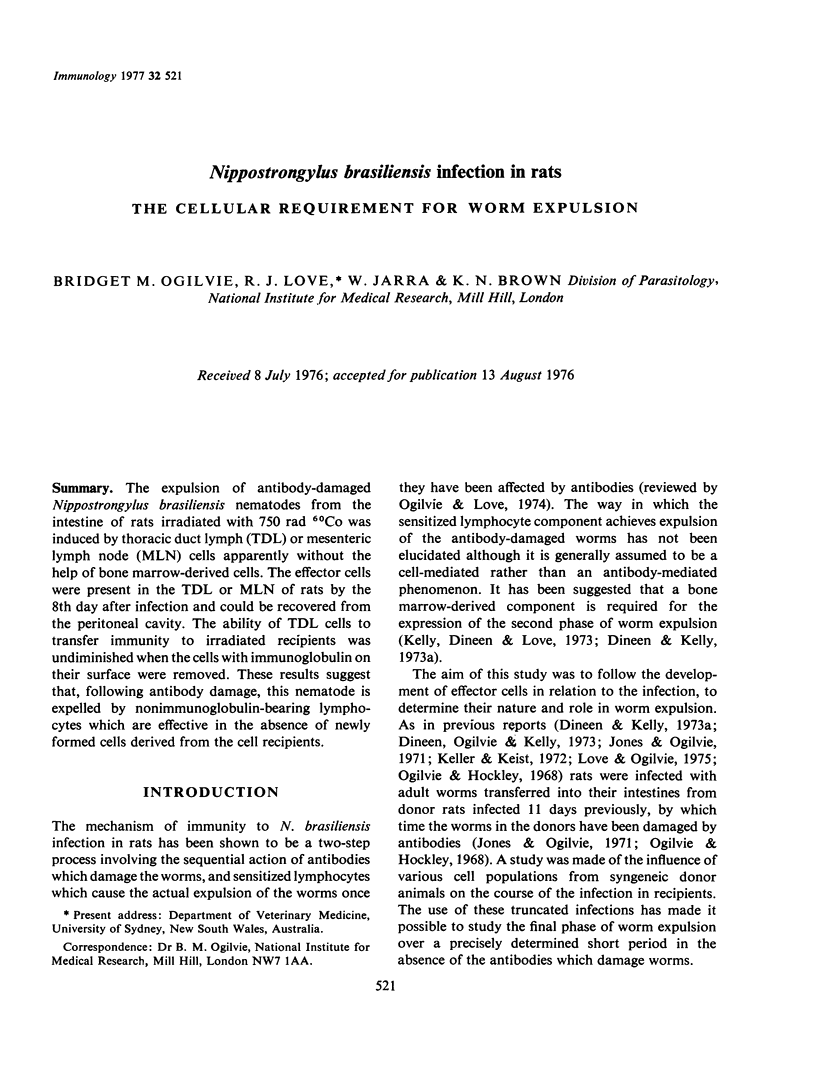
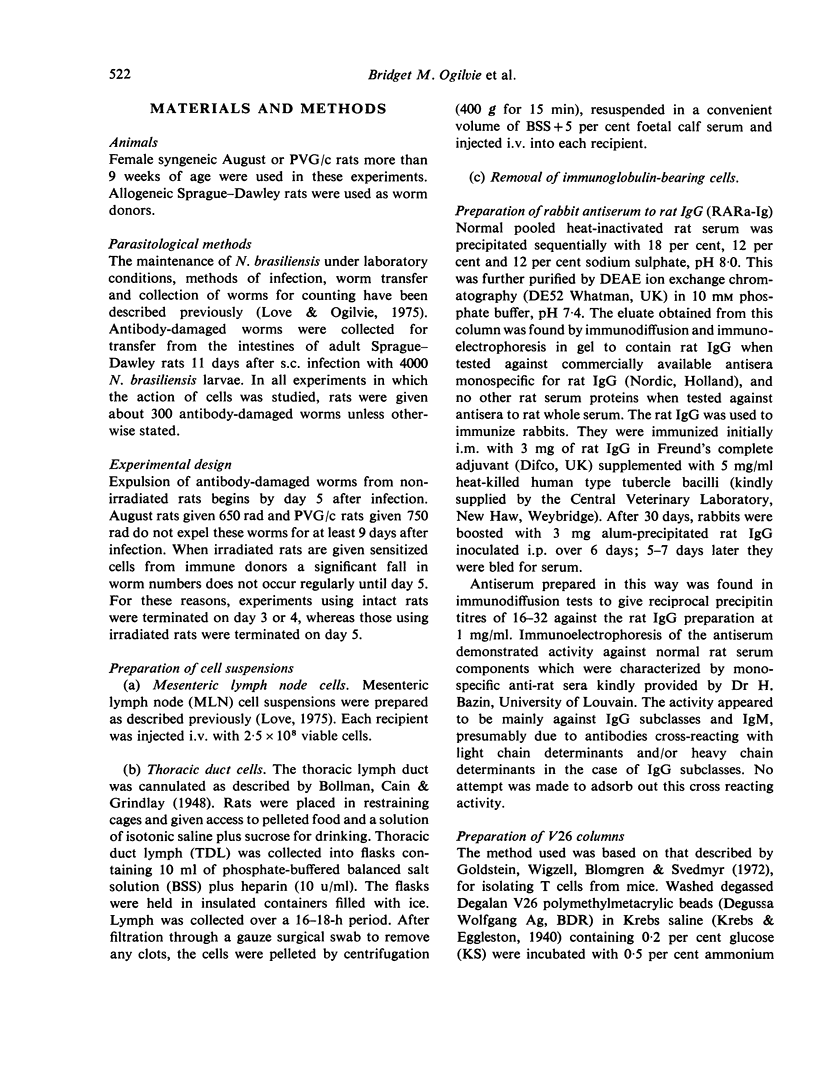
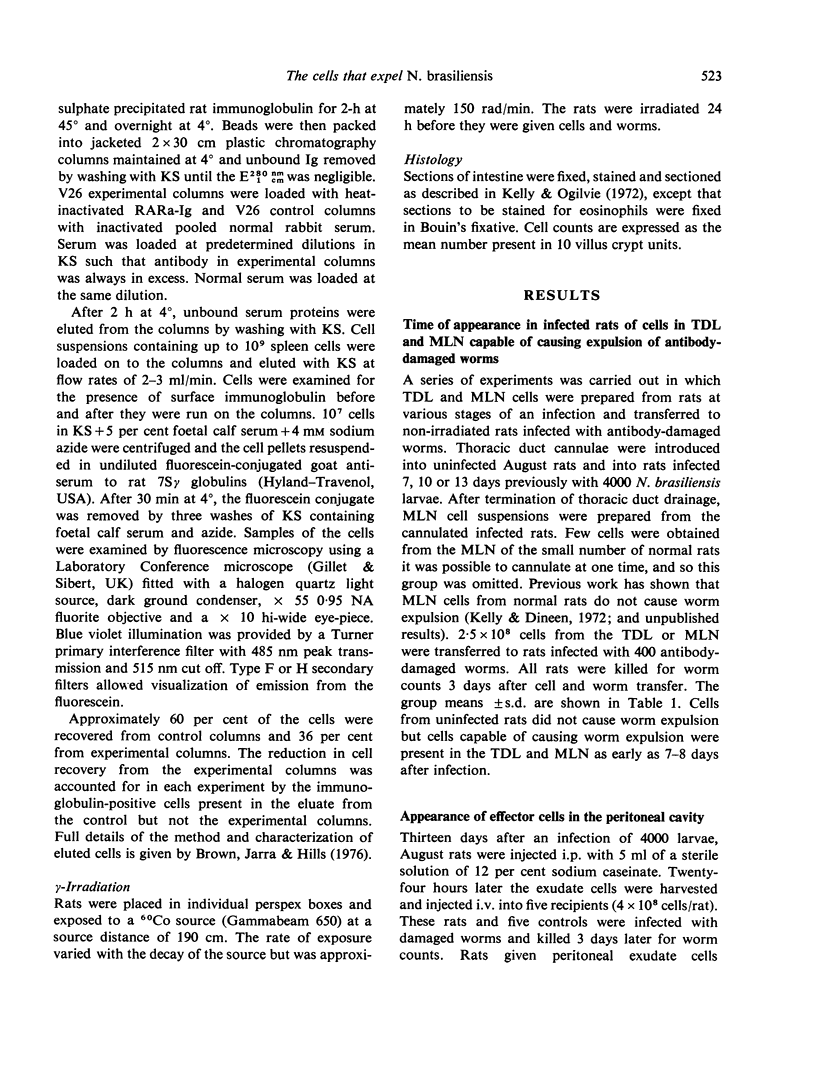
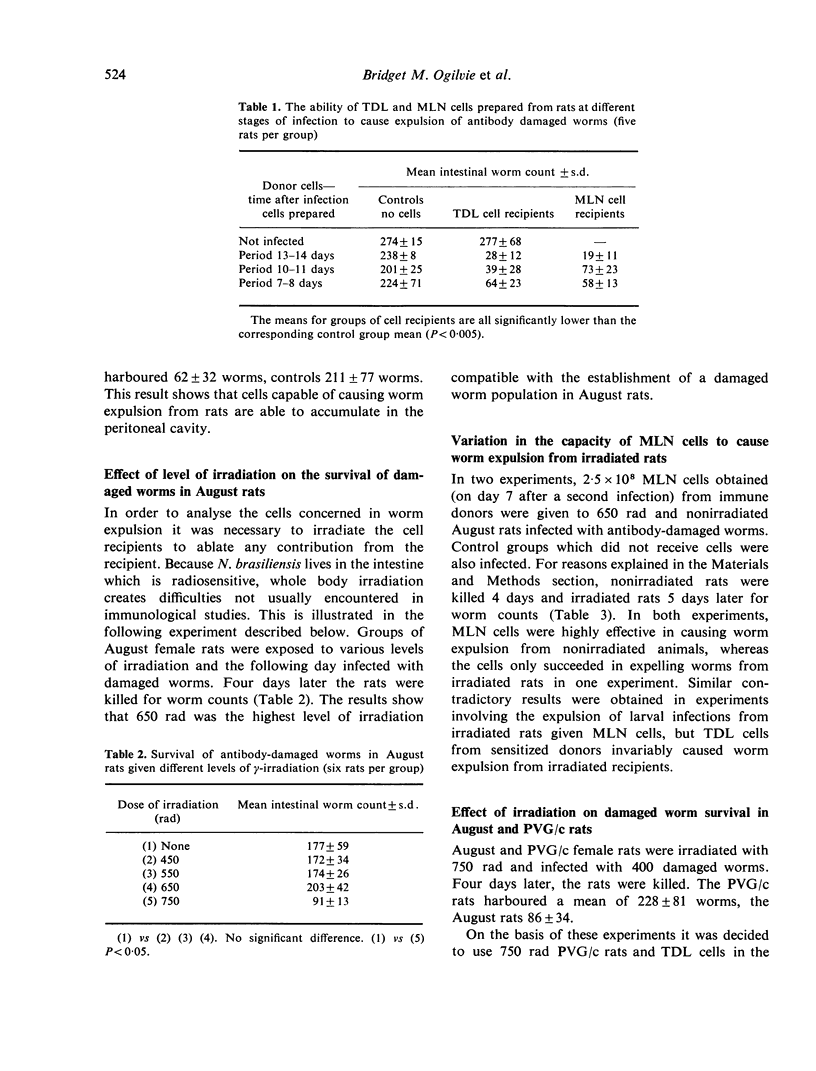
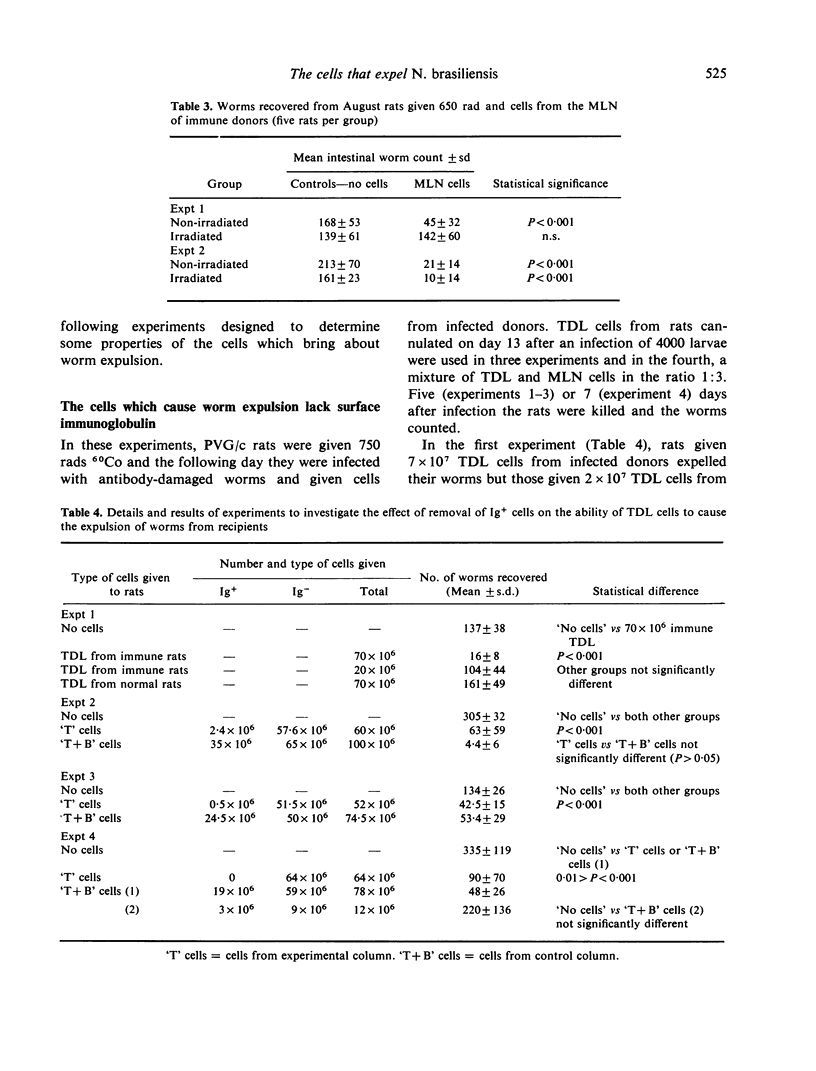
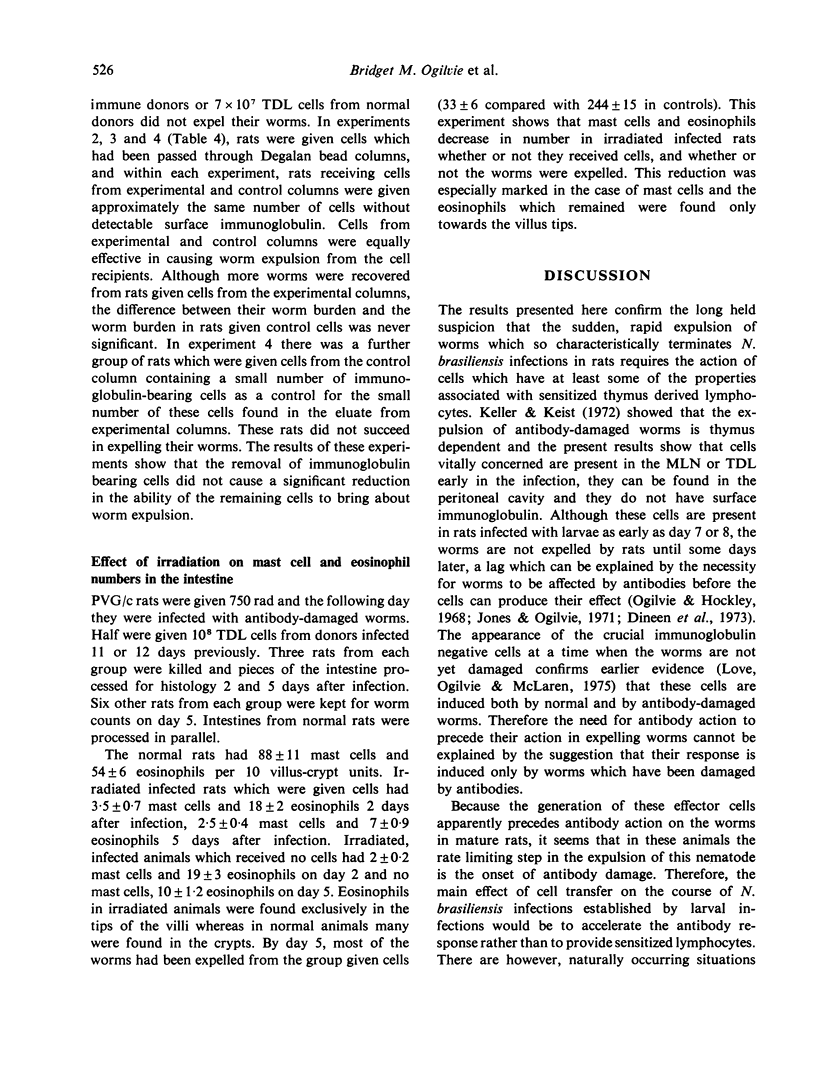
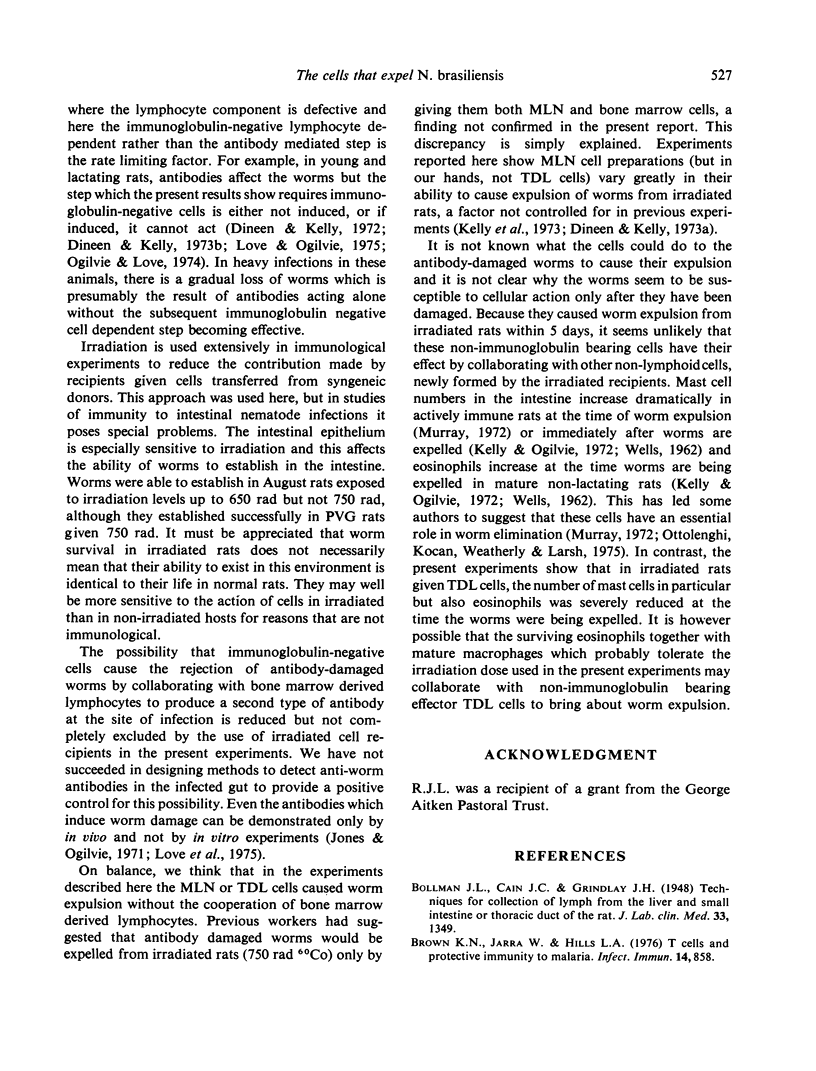
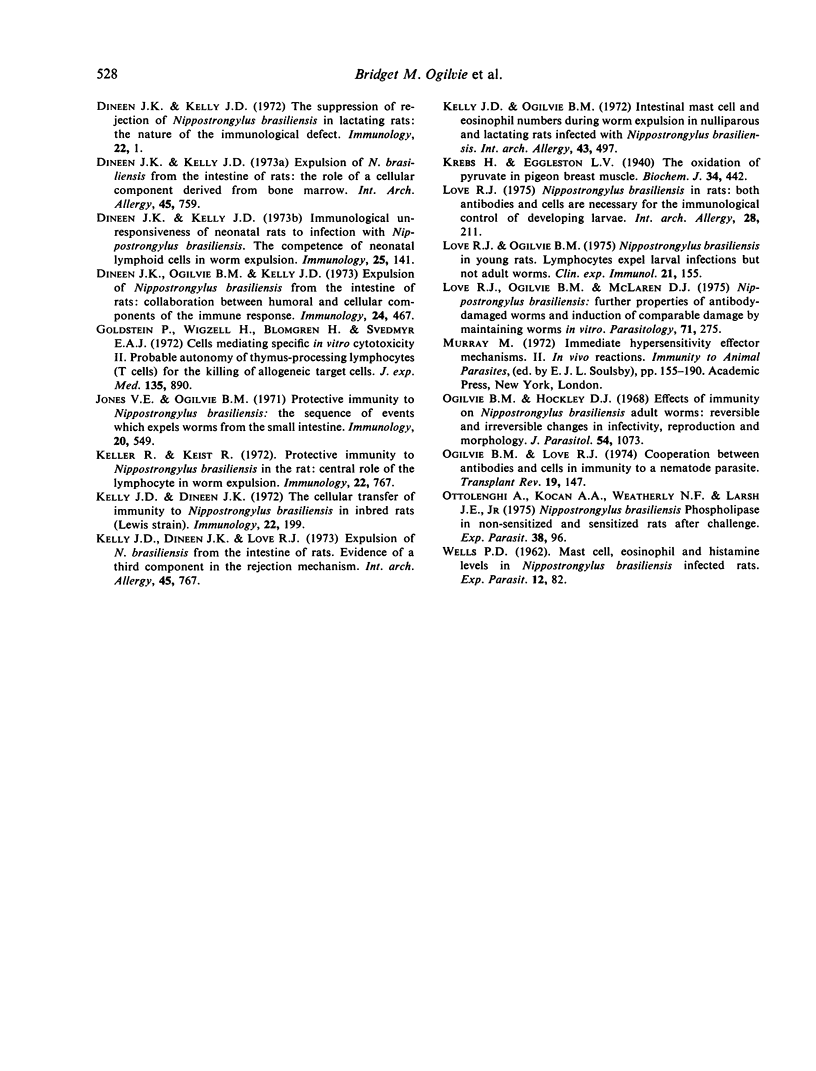
Selected References
These references are in PubMed. This may not be the complete list of references from this article.
- Brown K. N., Jarra W., Hills L. A. T cells and protective immunity to Plasmodium berghei in rats. Infect Immun. 1976 Oct;14(4):858–871. doi: 10.1128/iai.14.4.858-871.1976. [DOI] [PMC free article] [PubMed] [Google Scholar]
- Dineen J. K., Kelly J. D. Expulsion of Nippostrongylus brasiliensis from the intestine of rats: the role of a cellular component derived from bone marrow. Int Arch Allergy Appl Immunol. 1973;45(5):759–766. doi: 10.1159/000231075. [DOI] [PubMed] [Google Scholar]
- Dineen J. K., Kelly J. D. Immunological unresponsiveness of neonatal rats to infection with Nippostrongylus brasiliensis. The competence of neonatal lymphoid cells in worm expulsion. Immunology. 1973 Jul;25(1):141–150. [PMC free article] [PubMed] [Google Scholar]
- Dineen J. K., Ogilvie B. M., Kelly J. D. Expulsion of Nippostrongylus brasiliensis from the intestine of rats. Collaboration between humoral and cellular components of the immune response. Immunology. 1973 Mar;24(3):467–475. [PMC free article] [PubMed] [Google Scholar]
- Golstein P., Wigzell H., Blomgren H., Svedmyr E. A. Cells mediating specific in vitro cytotoxicity. II. Probable autonomy of thymus-processed lymphocytes (T cells) for the killing of allogeneic target cells. J Exp Med. 1972 Apr 1;135(4):890–906. doi: 10.1084/jem.135.4.890. [DOI] [PMC free article] [PubMed] [Google Scholar]
- Jones V. E., Ogilvie B. M. Protective immunity to Nippostrongylus brasiliensis: the sequence of events which expels worms from the rat intestine. Immunology. 1971 Apr;20(4):549–561. [PMC free article] [PubMed] [Google Scholar]
- Keller R., Keist R. Protective immunity to Nippostrongylus brasiliensis in the rat. Central role of the lymphocyte in worm expulsion. Immunology. 1972 May;22(5):767–773. [PMC free article] [PubMed] [Google Scholar]
- Kelly J. D., Dineen J. K., Love R. J. Expulsion of Nippostrongylus brasiliensis from the intestine of rats: evidence for a third component in the rejection mechanism. Int Arch Allergy Appl Immunol. 1973;45(5):767–779. doi: 10.1159/000231076. [DOI] [PubMed] [Google Scholar]
- Kelly J. D., Dineen J. K. The cellular transfer to immunity to Nippostrongylus brasiliensis in inbred rats (Lewis strain). Immunology. 1972 Feb;22(2):199–210. [PMC free article] [PubMed] [Google Scholar]
- Kelly J. D., Ogilvie B. M. Intestinal mast cell and eosinophil numbers during worm expulsion in nulliparous and lactating rats infected with Nippostrongylus brasiliensis. Int Arch Allergy Appl Immunol. 1972;43(4):497–509. doi: 10.1159/000230865. [DOI] [PubMed] [Google Scholar]
- Krebs H. A., Eggleston L. V. The oxidation of pyruvate in pigeon breast muscle. Biochem J. 1940 Mar;34(3):442–459. doi: 10.1042/bj0340442. [DOI] [PMC free article] [PubMed] [Google Scholar]
- Love R. J. Nippostrongylus brasiliensis infection in rats. Both antibodies and sensitised cells are necessary for the immunological control of developing larvae. Int Arch Allergy Appl Immunol. 1975;48(2):211–219. [PubMed] [Google Scholar]
- Love R. J., Ogilvie B. M., McLaren D. J. Nippostrongylus brasiliensis: further properties of antibody-damaged worms and induction of comparable damage by maintaining worms in vitro. Parasitology. 1975 Oct;71(2):275–283. doi: 10.1017/s0031182000046710. [DOI] [PubMed] [Google Scholar]
- Love R. J., Ogilvie B. M. Nippostrongylus brasiliensis in young rats. Lymphocytes expel larval infections but not adult worms. Clin Exp Immunol. 1975 Jul;21(1):155–162. [PMC free article] [PubMed] [Google Scholar]
- Ogilvie B. M., Hockley D. J. Effects of immunity of Nippostrongylus brasiliensis adult worms: reversible and irreversible changes in infectivity, reproduction, and morphology. J Parasitol. 1968 Dec;54(6):1073–1084. [PubMed] [Google Scholar]
- Ogilvie B. M., Love R. J. Co-operation between antibodies and cells in immunity to a nematode parasite. Transplant Rev. 1974;19(0):147–169. doi: 10.1111/j.1600-065x.1974.tb00131.x. [DOI] [PubMed] [Google Scholar]
- Ottolenghi A., Kocan A. A., Weatherly N. F., Larsh J. E., Jr Nippostrongylus brasiliensis: phospholipase in nonsensitized and sensitized rats after challenge. Exp Parasitol. 1975 Aug;38(1):96–104. doi: 10.1016/0014-4894(75)90042-9. [DOI] [PubMed] [Google Scholar]


